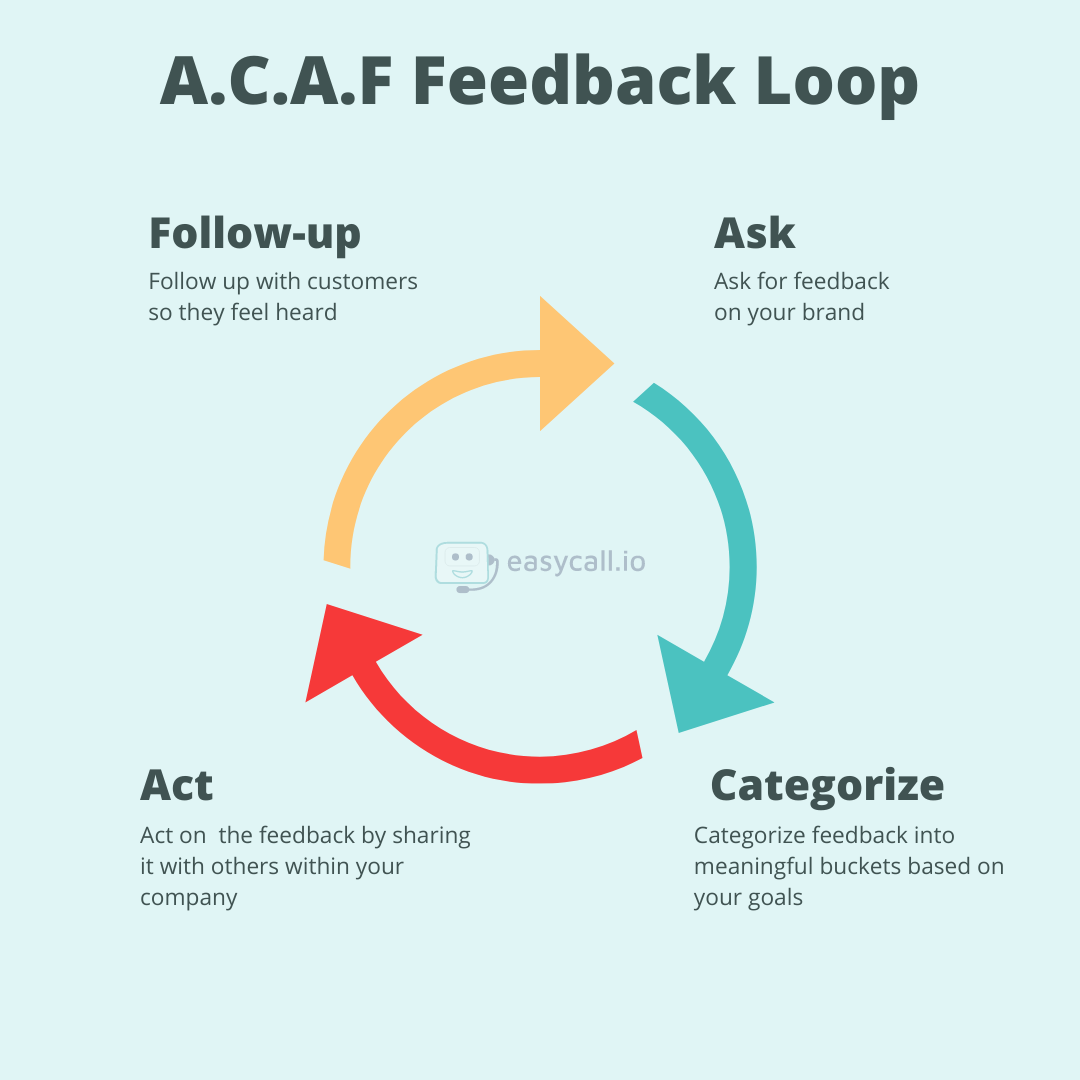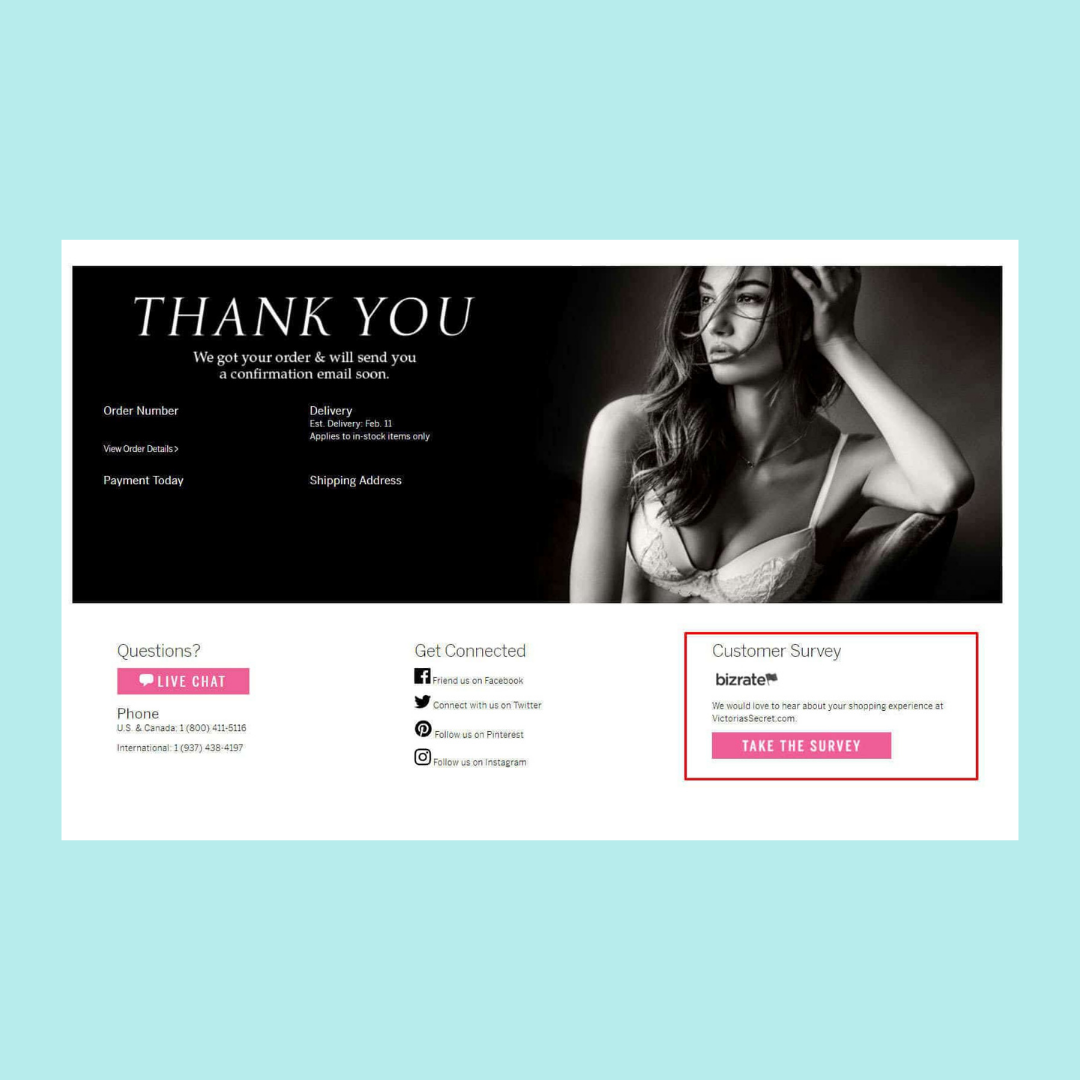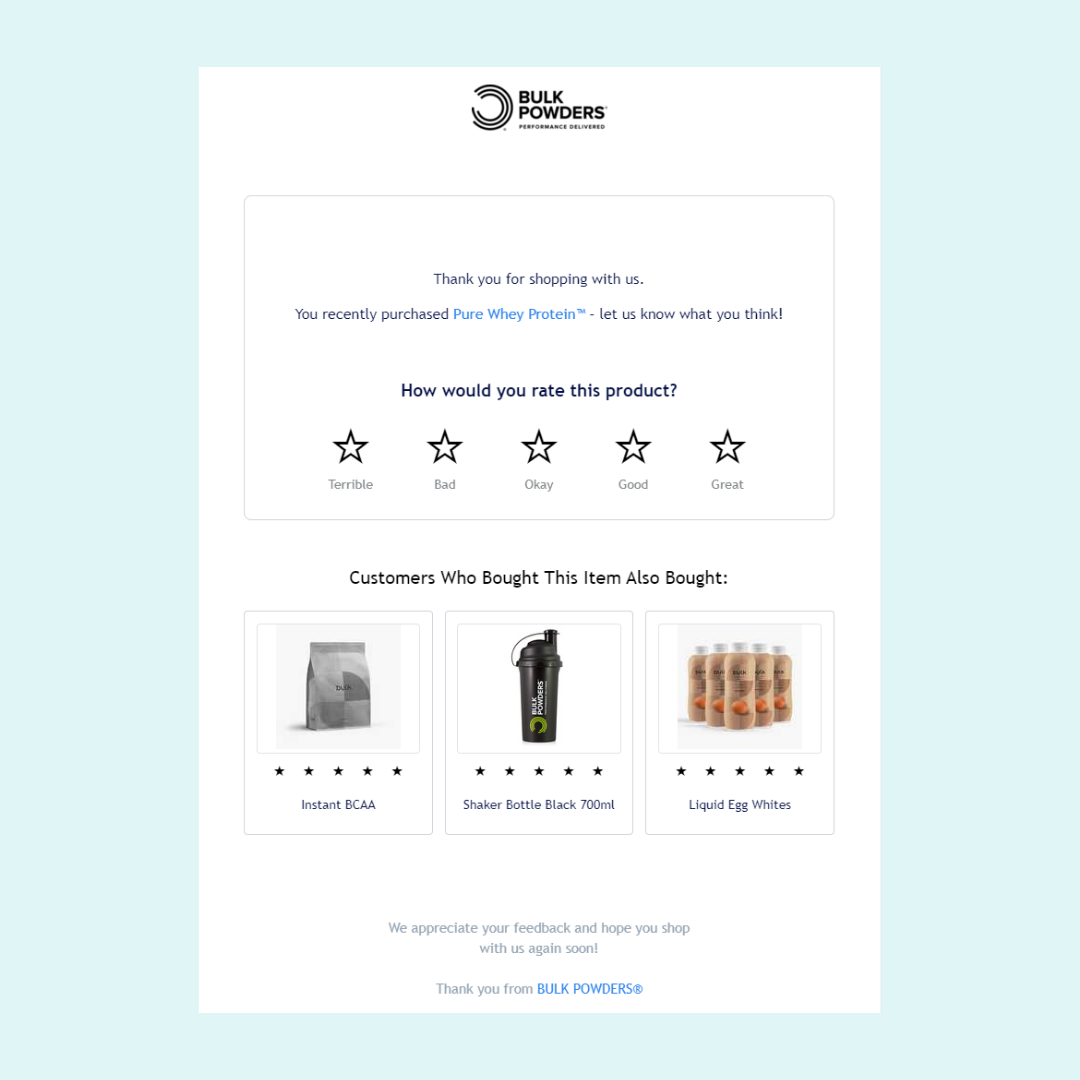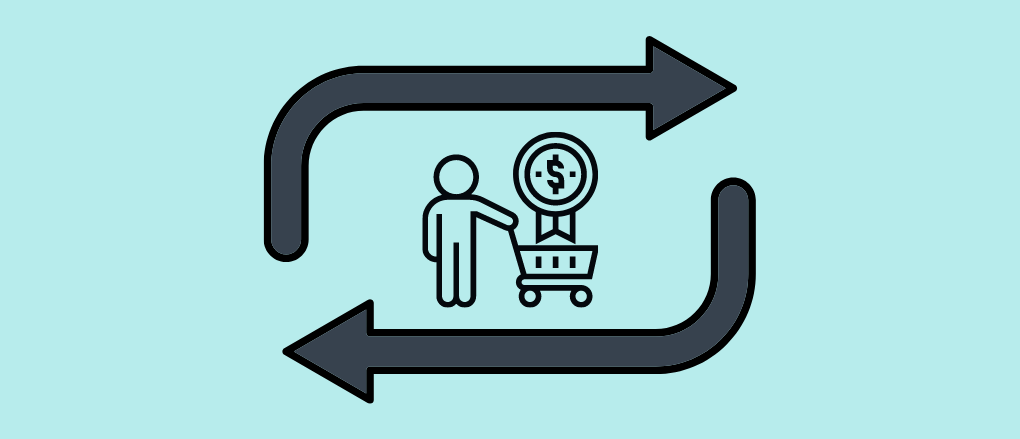Ok, I’ll say it – Customer feedback management isn’t the most glamorous aspect of running a business.
Yes, it’s far easier to get hyped up about launching a new marketing campaign or designing a new product.
But thrilling or or not, effective customer feedback management is vital to your business.
See, customer feedback is the best way to gain insights into how you’re doing as a business. But lots of businesses don’t know how to effectively leverage that feedback for business growth.
So, today, we’re talking about how to develop a process to manage customer feedback so you can create happier customers and beefier profits.
Well talk about:
- What customer feedback management is
- What types of feedback you should collect (hint: it’s not just surveys)
- How to develop your own feedback management flow using 6 best practices
Sounds good? Let’s dive in!
What is Customer Feedback Management?
Customer feedback management is the process of collecting, organizing and implementing customer feedback from multiple channels.
You’ve probably heard time and time again that customer feedback is an incredibly valuable resource, right?
However, feedback is of little use on it’s own. It’s how you manage your feedback that determines how valuable it is for your business.
And that’s where customer feedback management comes in.
Having a structured customer feedback management process breaks down your feedback and allows you to extract actionable insights that have a real impact on your business.
In essence, CFM empowers you to detangle the data and make decisions that improve your customer experience and build lifelong loyalty.
Understanding The ACAF Customer Feedback Loop
The ACAF customer feedback loop is one way of thinking about how you can understand and process customer feedback.

For example, let’s suppose you ask your customers questions in a survey. You’ll then segment the responses into positive, negative and neutral. Then you might take action based on your findings.
Seems pretty intuitive, right?
Well, here’s the catch – Without a proper customer feedback management process, you won’t be able to capitalize on steps 3 and 4 of the loop.
In other words, you can design the best survey in history, but if you’re not able to cross-analyze your results, you’ll fail to grasp the full picture of your customer’s sentiments.
So, with that in mind, let’s keep going to discuss the types of feedback you should be collecting and reviewing on a daily and weekly basis.
The Types of Customer Feedback You Should Collect
Effectively managing your customer feedback starts with knowing where to collect it. Here’s five fail-safe places to get high quality feedback from your customers today.
1. Thank You Page Surveys

Typically collecting customer feedback is plagued by dismally low response rates and unreliable data.
Thank you page surveys are awesome because they solve both of these problems. Think about it, customers who’ve just bought from you are highly likely to comply with additional requests.
Plus, the shopping experience is super-fresh in your customer’s minds which means you’ll get the most accurate data possible.
2. Exit Intent Pop-Ups
Exit intent pop-ups are great to gather feedback from shoppers who didn’t convert. This data provides you valuable info about why shoppers left.
The trick is to make them super easy to answer – your respondents are on the way out the door – you just want to ask them why. A super-quick multiple choice survey is best here.
3. User Heatmaps & Website Metrics
User heatmaps can quickly allow you to identify why customers are leaving your site and firm up your conversion funnel. They’re especially effective when used in conjunction with exit-intent pop-ups.
Website metrics can provide unique insights too. For example, a high bounce rate or cart abandonment rate are strong signals that your customer’s aren’t satisfied with specific areas of the shopping experience.
4. Email Surveys

So far all the types of feedback we’ve discussed are related to your website. But email allows you to connect with customers in their email inboxes.
The beauty of email surveys is that you can survey specific segments of your audience. For example, this means you can collect data specifically from your best customers or first-time shoppers.
Pro Tip: Use Getform to run quick and easy surveys with a shareable link that’s perfect for email.
5. Live Feedback
If you use live chat or have a business phone number, your agents are likely a repository of valuable customer feedback.
Seriously, you agents spend their days resolving customer problems. So, it’s worth asking them for feedback around the most common pain points your customers are going through.
6. Social Media

Social media is also a fantastic place to both provide support and listen to what others are saying about you.
Seriously, your inbox and comments sections will be a goldmine of customer feedback.
Plus, most social media sites have poll surveys that you can run by your audience for free. In addition, you can leverage social listening tools to pick up brand mentions and collect feedback, too.
Now, because of the public nature of these platforms, you shouldn’t rely on them as your only source of feedback.
Instead, they’re better suited to asking one-off questions such as ‘What content do you want to see next?.’
7. Customer Reviews
Monitoring reviews is a good way to discover what customers like and don’t like about your business.
For example, if you see people repeatedly complain about your slow shipping or that your return policy stinks, you know it’s time for a different approach.
Similarly, product reviews might reveal where elements of your products or collections could be improved.
6 Best Practices for Effective Customer Feedback Management
Okay now that you know what types of feedback to collect, let’s examine the best ways to go about it.
1. Start With the End in Mind
Before collecting customer feedback, it’s important to understand what you’re hoping to achieve.
There’s a million things you can look at, and it’s easy to go overboard trying to analyze everything at once.
But by setting goals at the start of the process, you’ll help keep your efforts focused and productive.
Identify what it is you want to analyze. This might be a specific customer touchpoint or a broader view of the entire customer experience. Then decide what methods (survey’s, pop-ups, etc.) you’ll use to capture relevant data.
By beginning with the end in mind, you’ll capture actionable feedback that you can actually use to deliver a better customer experience.
2. Design A Feedback Process That Aligns With Your Objectives
With your objectives set, it’s time to think about how you’ll collect relevant feedback. The key here is to choose customer satisfaction metrics that align with your goals.
For example, depending on your goals, some metrics you may consider are:
- Net Promoter Score (NPS)
- Customer Satisfaction Survey (CSAT)
- Customer Effort Score (CES)
- Abandonment Rate
Each of these metrics can tell you different things about how happy your customers are. For example, NPS is useful for gauging overall customer satisfaction whereas CSAT is better to discover how shoppers feel about a specific department.
So, choose the most appropriate metrics that’ll allow you analyze, monitor and track progress towards your customer service goals.
Then, once you pick your metrics, decide which channel is the best place to collect data from your customers (scroll back up to see the seven best places we recommend!)
3. Categorize Your Feedback
Once feedback is flowing in, you’ll need to categorize it to make it useful. Choosing the right customer feedback management tools is vital here.
Some of the most common tools are:
- Google Sheets/Excel: Spreadsheets are great for collecting and organizing large amounts of customer feedback. If you’re nifty with Excel, you can also semi-automated categorization and incorporate exported data from your surveys.
- CRM tools: Various customer relationship management tools can collate survey data and help you build an accurate picture of your customer’s sentiments.
- Brand Mention Tools: Tools like Hootsuite let you monitor mentions of your brand on social media. Other tools like Ahrefs can alert you whenever somebody links to your site (in the case of a PR mention or review)
Once you’ve picked a tool for organizing your data, it’s time to create categories to make your data actionable.
Three key categories you might use are:
- Customer Support Feedback: Figure out how satisfied customers are with your customer support.
- Product Feedback: Discover what customer’s think of your products and unearth how they can be improved
- Website Feedback: Work out how easy customer’s find it to shop on your store and identify where you can boost your conversion rate
Segmenting your customer feedback into separate buckets like this allows you to draw out more accurate insights and keep progressing towards your goals.
4. Build A Customer Feedback Action Plan
With your customer feedback categorized, you’re ready to start taking action. The best approach here is to address issues by volume and priority.
For example, an unclear returns policy may lower your conversion rate and knock $10,000 off your monthly revenue. This kind of issue needs to be addressed immediately as it’s both urgent and relevant to every shopper.
Other issues like new product requests can be dealt with once the most pressing and common issues get sorted.
You should also follow up with customers over time to see how you’ve improved. Most companies skip this step, however it makes customer’s feel heard. Plus, it encourages them to become serial feedback givers in the future.
5. Monitor & Refine Your Feedback Efforts
As with most things in eCommerce, you need to keep testing until you find what works best.
Don’t assume that your first customer feedback management process is optimal. Instead monitor your channels, surveys and tools to determine where you’re getting the best feedback.
You may find that using too many surveys is diluting the quality of your customer’s responses. Or perhaps, you’re using too few surveys and missing opportunities for valuable feedback.
Just like your Facebook ads, test out different timings, copy and placements until you find the right combination that’ll give you the highest response rates and most useful feedback.
6. Use Feedback to Build a Customer-Centric Culture
Your customer’s have some of the best ideas for improving your business. Their journeys are unique and so is each piece of feedback.
You can do as much market-research as you like. You can study all the latest trends. But ultimately, your customer feedback is the best source of information for building a better business.
Use your customer feedback internally to unite conflicting opinions and build a vision for where you want to go. Remember, as a business you exist to serve your customers. And as a collective, your customers are pretty much always right.
Level-up Your Customer Feedback Management Game Today
Developing a robust customer feedback management system doesn’t have to be complicated.
At the end of the day, it’s about building a process that allows you to ask and make sense of what your customers think about you.
Remember, the only way you can know how your customers feel is to ask them.
If you’ve discovered another way (like mind-reading), please send us an email , we’d love to ask you about our stock portfolio!
Now over to you! Do you struggle with making head or tail of your customer’s feedback? What’s the biggest hurdle you face? – let us know in the comments below!




